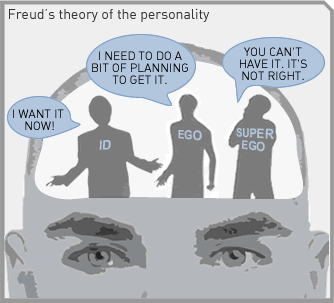Psychodynamic Approach
-Founded by Sigmund Frued

Originating in the work of Sigmund Freud, the psychodynamic perspective emphasizes unconscious psychological processes (for example, wishes and fears of which we’re not fully aware), and contends that childhood experiences are crucial in shaping adult personality. The psychodynamic perspective has evolved considerably since Freud’s time, and now includes innovative new approaches such as object relations theory and neuropsychoanalysis. Some psychodynamic concepts have held up well to empirical scrutiny while others have not, and aspects of the theory remain controversial, but the psychodynamic perspective continues to influence many different areas of contemporary psychology.
Psychodynamic theory is most closely associated with the work of Sigmund Freud, and with psychoanalysis, a type of psychotherapy that attempts to explore the patient’s unconscious thoughts and emotions so that the person is better able to understand him- or herself. Thinking about our won thoughts-” Metacognition“.
Psychodynamic theory refers to the behavior motivated by internal or psychological forces and abnormality is caused by imbalance in internal forces that motivate the behavior. He believed that mental illnesses arises from unsolved conscious conflicts and these happens mostly in early childhood( Freud 1925).
Freud introduced his topographic model of the mind, which contended that the  mind could be divided into three regions: conscious, preconscious, and unconscious. The conscious part of the mind holds information that you’re focusing on at this moment—what you’re thinking and feeling right now. The preconscious contains material that is capable of becoming conscious but is not conscious at the moment because your attention is not being directed toward it. You can move material from the preconscious into consciousness simply by focusing your attention on it. Consider, for example, what you had for dinner last night. A moment ago that information was preconscious; now it’s conscious, because you “pulled it up” into consciousness. (Not to worry, in a few moments it will be preconscious again, and you can move on to more important things.)
mind could be divided into three regions: conscious, preconscious, and unconscious. The conscious part of the mind holds information that you’re focusing on at this moment—what you’re thinking and feeling right now. The preconscious contains material that is capable of becoming conscious but is not conscious at the moment because your attention is not being directed toward it. You can move material from the preconscious into consciousness simply by focusing your attention on it. Consider, for example, what you had for dinner last night. A moment ago that information was preconscious; now it’s conscious, because you “pulled it up” into consciousness. (Not to worry, in a few moments it will be preconscious again, and you can move on to more important things.)
The unconscious—the most controversial part of the topographic model—contains anxiety-producing material (for example, sexual impulses, aggressive urges) that are deliberately repressed (held outside of conscious awareness as a form of self-protection because they make you uncomfortable). The terms conscious, preconscious, and unconscious continue to be used today in psychology, and research has provided considerable support for Freud’s thinking regarding conscious and preconscious processing (Erdelyi, 1985, 2004). The existence of the unconscious remains controversial, with some researchers arguing that evidence for it is compelling and others contending that “unconscious” processing can be accounted for without positing the existence of a Freudian repository of repressed wishes and troubling urges and impulses (Eagle, 2011; Luborsky and Barrette, 2006).
Impacts on Society
- Recognizing recurring patterns helps people see the ways in which they avoid distress or develop defense mechanism as a method of coping so that they can take steps to change those patterns.
- The psychodynamic approach can be criticized for being sexist against women
- Any irrational behaviors can be blamed on childhood instances of trauma or development.
Strengths and Weaknesses of Psychodynamic Approach
- The psychodynamic approach is that it takes both nature and nurture into account. This is a strength because it emphasises the importance of both.
- It claims that everybody can suffer mental conflicts and it is part of life.
- Promotes more optimism regarding mental illness and encourage speaking up about their psychological distress.
- No scientific machineries needed like MRI thus making people feel more comfortable and relaxed that hey themselves can cure their mental illness.
- The greatest criticism of the psychodynamic approach is that it is unscientific in its analysis of human behavior.
- The psychodynamic perspective is unfalsifiable as its theories cannot be empirically investigated.
- Rejects Free will (e.g. Humanism believe free will exists)
- Not measurable or cannot be relied by repeatedly testing.